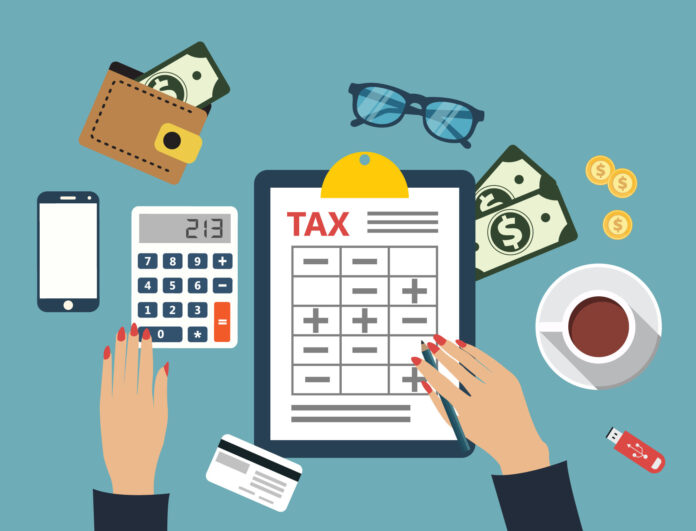Embarking on a journey through the labyrinth of the Canadian taxation system may initially seem intimidating, but with the correct guidance, it can become a navigable path. This blog post aims to demystify the Canadian taxation landscape, offering you valuable insights into the nuances of compliance and various strategies for maximizing your savings. Whether you’re an individual filer or a business, the following advice can greatly assist in your tax navigation.
Understanding Canadian Taxation System

The Canadian taxation system, a mechanism overseen by the Canada Revenue Agency (CRA), is based on a self-assessment model. Taxpayers are expected to declare their income and calculate the amount owed accordingly. The system is progressive in nature, meaning rates increase with an individual’s taxable income. Nevertheless, the system’s intricacies can often leave taxpayers perplexed and anxious. This is why tax preparation services are such a good idea.
The taxation process becomes less daunting once the key components are clear. The Canadian taxation system relies on two main types of taxes: income tax and consumption tax. Income tax, applicable to both individuals and businesses, is based on your yearly earnings. Consumption tax, on the other hand, is imposed at the point of sale and includes the Goods and Services Tax (GST), the Harmonized Sales Tax (HST), and Provincial Sales Tax (PST), varying by province.
Do’s for Compliance
Proactive tax compliance necessitates some fundamental actions. First, ensure you file your returns on time. This seemingly straightforward task, if neglected, could result in penalties and interest. Second, honesty is key. Make sure you report all income from every source, including those outside Canada, to avoid complications and potential fines.
The second vital point of action is an accurate calculation of income and deductions. Avoid under-reporting or over-reporting, as the CRA performs checks and balances on all reported figures. You must also claim only eligible deductions and credits, adhering to the tax laws. Incorrect calculations could invite unwanted scrutiny and potential legal issues.
Don’ts for Compliance

When it comes to compliance, there are also certain actions you should steer clear of. To begin with, do not ignore correspondence from the CRA. Any communications, whether they seem insignificant, could hold crucial information about your tax status. Neglecting these could lead to undesirable consequences including penalties.
In the same vein, do not overlook deadlines. Apart from filing your returns on time, other tax-related deadlines, such as paying any outstanding fee due and contributions to savings accounts, are equally important. Missing these can result in interest accruing on the amount owed, inflating your liability.
Maximizing Savings
There exist several avenues to maximize tax savings within the Canadian taxation system. Firstly, one should aim to utilize all applicable tax credits and deductions. This includes RRSP contributions, tuition credits, medical expenses, charitable donations, and others that are often overlooked but could significantly reduce your liability.
Consider income splitting with your spouse or common-law partner, where applicable. This strategy involves transferring income from a higher-earning spouse to the lower-earning one, potentially resulting in a lower overall tax burden for the couple. This is, however, subject to specific rules and regulations, so professional advice is recommended.
Avoiding Common Pitfalls
As you navigate the taxation terrain, it’s crucial to sidestep common pitfalls. One major blunder is not keeping appropriate records of your income and expenses. Without proper documentation, you cannot substantiate your claims for deductions and credits, which may lead to a denial of these benefits by the CRA.
Another significant misstep to be aware of is the incorrect classification of workers as independent contractors when they should be considered employees. This could lead to fines and penalties for not remitting the correct amount of payroll taxes. It’s always prudent to seek advice if you are unsure about worker classification.
Resources and Assistance

Support in understanding and complying with tax laws is available. Resources like the CRA’s website contain comprehensive guides and information on various tax topics. These can clarify obligations and rights, ensuring you stay informed and compliant.
Professional assistance can also prove beneficial. Hiring a Certified Public Accountant (CPA) or tax professional can ease the filing process and provide advice on optimization. These professionals keep abreast of changes and can provide tailored advice to ensure you meet all obligations while maximizing savings.
Record-Keeping Best Practices
Adopting best practices for record-keeping is essential for both compliance and savings. Maintain all documents related to your income and expenses, including receipts, invoices, bank statements, and any other financial documents. These should be kept for at least six years, the period within which the CRA can review your tax affairs.
Digital storage of these records is a viable option. Numerous software solutions exist that can streamline the record-keeping process, making it easier and more efficient. However, remember to back up your digital data regularly to avoid potential loss due to technical issues.
Planning Strategies for Individuals and Businesses

Tax planning, both for individuals and businesses, can result in significant savings. For individuals, this could involve contributing to tax-advantaged savings accounts like Registered Retirement Savings Plans (RRSPs) or Tax-Free Savings Accounts (TFSAs), planning for income splitting where possible, or even choosing the right investments.
For businesses, tax planning may involve considering the business structure, taking advantage of available deductions, and planning for capital gains and losses. Professional advice is invaluable in formulating the optimal tax strategy for your specific circumstances.
Final Words
Navigating the Canadian taxation system needn’t be a daunting task. While it may seem impossible at times and like the worst chore imaginable, it really does not need to be like that. With a clear understanding of the system, adherence to the do’s and don’ts of compliance, a focus on maximizing savings, and avoidance of common pitfalls, you can stay ahead in the tax game.
Armed with these insights and with the assistance of professional resources, you’ll be well-equipped to deal with the intricacies of the Canadian tax landscape, enabling you to fulfill your obligations while also optimizing your financial situation.









